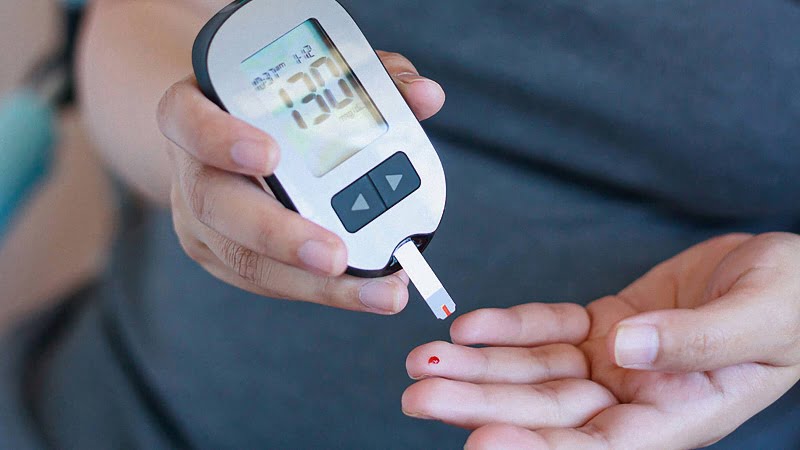
For millennia, the hemp plant has served many different uses–from healing rituals to manufacturing ropes and biofuel. The plant’s most well-known association, however, remains the intoxicating drug marijuana, which derives its potency from the THC components of the female plant’s buds. However, THC is merely one of more than a hundred cannabinoids that naturally occur in hemp, one of which is Cannabidiol (CBD), ‘the wellness cannabinoid’. CBD is entirely safe, non-intoxicating, and comes with a number of therapeutic effects–at least, that’s what every company promises. But can they prove it?
CBD market: in urgent need of ethical attention
While no-one has ever experienced a CBD overdose, it is common to feel overwhelmed by the amount of CBD products available. To make matters worse, many companies have sought to take advantage of CBD’s rising success, with little care for ethical practice and the health of customers.
The issue of mislabelled products is as old as it is pernicious. So-called ‘food fraud’ is commonly seen in products containing olive oil, saffron, and honey. A recent study, published in the Journal of Food Sciences, showed that 75% of the honey sampled by investigators contained so little pollen as to not even technically count as ‘honey’ under FDA regulations! The problem is no less prevalent in the world of wellness products. This is unfortunate, as unethical marketing risks undermining what valuable trust has been garnered through solid scientific work.
Back in 2017, medical researchers at the University of Pennsylvania analysed 84 CBD products from 31 different online companies. The results were staggering: more than 70% of products were either over- or under-labelled. With the majority of products misadvertising its ingredients, consumers are bound to get stuck, at best, with simple placebo effects, and at worst, with those very conditions that CBD could help with–including anxiety, respiratory inflammation, muscular pain, and epilepsy. Not to mention, companies are getting rich selling ‘snake oil’ while soiling CBD’s reputation.
In the UK, the situation is only slightly better. One source of evidence is a key 2019 study carried out by the Centre for Medicinal Cannabis (CMC), an independent cannabis-advocacy group. Of the 30 CBD products tested for contents and label accuracy, the study found 60% claimed a false CBD content. A solid 38% contained less than half of their alleged CBD amount, with one product–a 30ml bottle costing £90 that was purchased from a High Street pharmacy–containing no CBD at all. In turn, 45% of the products sampled revealed higher levels of THC than is allowed by law. One product had enough alcohol to effectively qualify as an alcoholic beverage, and several other products contained excessive amounts of solvents and heavy metals.
Back to the Lab: what to test for, and how

A product’s label can claim lots of things. As responsible consumers, it is our right to demand proof. On the other hand, we believe that a responsible company’s job is to volunteer proof on top of their words–especially when people’s health and wellbeing is concerned. For CBD companies with nothing to hide, the rule of thumb should be to work closely with a testing facility capable of objectively assessing a product. Tests may be conducted either by third-party laboratories, independent certifying bodies or by the company’s own accredited laboratories, provided trusting relationships are in place, and regulatory standards are met.
Here at Goodbody, we have built a strong alliance with PhytoVista Laboratories, a leading UK market leader in its own right. Since last year, PhytoVista has officially become a member of our Sativa Wellness Group family, helping us in our goal to successfully integrate testing and scientific research with manufacturing and retail.
This new partnership enables us to put analysis right where it belongs, namely at the heart of production. At the same time, PhytoVista’s state-of-the-art Quality Management System, which won the laboratories wide acclaim in the field of CBD testing, ensures a level of accuracy in line with both national, as well as international, standards.
So what exactly does lab testing involve? As may be expected, analysing CBD is a rather technical process. Scientists can run a number of different tests depending on the parameters. For example, testing for THC contents involves mixing small amounts of the product with a test liquid, then immersing it in a solvent, and finally spraying the dried solution with a dye that ‘colours’ every cannabinoid differently.
Checking the THC amounts in your CBD ensures that the product is legal, safe, and reliable. Since CBD comes from hemp, it is not rare for some products to contain trace amounts of THC. But for a CBD product to be deemed legal, this amount should be less than 0.2%. This percentile is so small, that a certified CBD product comes with zero risks of getting you high or intoxicated–or making you fail that drug test. The legal threshold is also very low for ‘THCA,’ an acid compound which turns into THC once decarboxylated, i.e. exposed to heat. A myriad of other cannabinoids may show up in a lab test, including CBG (Cannabigerol), CBN (Cannabinol), and the lesser-known CBC (Cannabichromene). These have all been associated with different therapeutic effects and can work in synergy with CBD.
As for the CBD contents themselves, their quantity will vary depending on the product. What matters in every case is that the label matches the stated ingredients. For example, our Goodbody CBD oils range from our ‘Low Strength’ drops, with 2.5% CBD per 10ml bottle, all the way to our ‘MAXPlus’ version, which comes with 20% CBD (2000mg CBD). Furthermore, all of our oils contain a unique blend of ‘broad-spectrum’ cannabinoids, ensuring delivery of their enhanced benefits–and no THC.
But cannabinoids are not the only things that a CBD product can be tested for. A full suite analysis will also screen for pesticides, unwanted contaminants, residual heavy metals, and mycotoxins. For a product to be safe, it should contain none of these residual ingredients. Further available measurements will check the amount and potency of terpenes–a class of natural compounds commonly found in plants and animals. While terpenes are rarely tested for–their effects being positive and their presence a plus–measuring the other parameters can be helpful.
Just as mercury can ‘bioaccumulate,’ or become concentrated in fish, residual substances in the soil can also concentrate in hemp. The key to eliminating any unwanted pollutants lies in the extraction process: solvent extraction is cost-effective but highly dangerous, while CO2 extraction is by far the safest, most advanced, and also the most expensive method. In between the two sits olive oil extraction, an old method of which the main downside is the highly perishable nature of the resulting products. No matter which method a manufacturer adopts, a comprehensive lab test will help ascertain the safety of the final product.
Certifying authenticity: the Certificate of Analysis (COA)

To avoid falling prey to inflated labels, it is good always to verify a product’s Certificate of Analysis (COA). The COA is what a lab test culminates in: the document which verifies a product’s physiochemical composition. Not only does the existence of this document confirm that the product has been tested, but the COA is also open to public scrutiny. This factor is key, as not every COA necessarily translates into a guarantee. Before learning how to read a COA, however, we have to first get hold of one.
Some companies post their COAs online, and you can find them through a quick Internet search. Other companies require you to contact them and request a COA directly. Do not feel shy about contacting a company: providing a COA is their responsibility. If certifications are unavailable, or a company fails to return your inquiries, it is probably best to steer well clear of that particular product or brand.
To make things easier, all of our Goodbody products come with a QR code that links the label directly to the relevant certificate. You can also find a list of our COAs side by side their respective product on our website. Our partnership with PhytoVista Labs means that our tests are regularly updated, with optimal turnaround times. Indeed, something to look out for in the COA is the date: a company should conduct regular tests and update its certificates accordingly. Where a COA is too dated, this could mean that recent tests have failed to provide positive results. In general, a test is considered valid for one to two years after issue.
No matter how readily available a COA might be, what counts in the end are the results and what they mean. Lab results get predictably tiresome to read, as all the acronyms and decimal places risk causing confusion, rather than clarifying a product’s quality. With just a few pointers, however, a product’s COA can become almost as intuitive to read as its front label. As an example, we will be running through one of our own certifications.
How to make sense of a Certificate of Analysis?

The COA breaks down into several parts. First, is the Header. This should specify the product description, the name of the certifying body or laboratory, alongside its address and the date of certification.

Next is the product’s Cannabinoid Profile, or in our example, the Advanced Cannabinoid Profile. As you can see, CBD is by far the most prevalent ingredient. Always ensure that the CBD content is not lower than what is claimed on the packaging.
You will also notice a range of cannabinoids marked as ND (Non-Detectable) because of their being below the LOD (Limit of Detection). Their presence would not necessarily pose any threat, however. For instance, research on CBDA (Cannabidiol acid) is associated with anti-nausea and anti-stress effects–among others.
Where the calibration of particular cannabinoids varies from product to product, depending on the type of CBD, the levels of THC should be as low as possible (and no higher than 0.2%). However, if you look at the Cannabinoid Profile in our example, you will see that there are almost as many different ‘THCs’ as there are acronyms starting with ‘CB.’ Why is that–and what are those odd ‘delta’ (Δ) signs preceding THC?
In brief, Δ9-THC is the most abundant cannabis constituent found in hemp. This is the tetrahydrocannabinol we usually refer to when we say ‘THC,’ and the one you especially want to look out for. Δ9-THC differs from Δ8-THC by a mere few atomic bonds, and both have psychotropic potency (though Δ8 less so than Δ9). Δ8-THC’s own therapeutic effects have started to attract attention thanks to recent scientific studies, such as this one, pointing once more to the wondrous, and still largely untapped potential of cannabinoids.

The Foot section of the COA should bear the explicit approval of the certifying laboratory. In our case, you can also find the planned review date for the product’s certification, and a QR code linking you to PhytoVista Labs’ online resources.
Different COA documents might have a Body that specifies every other chemical component found, as well as the results of tests conducted on top of CBD and THC. All of these different components, compounds, and chemicals can be difficult to remember or make sense of. Our Cannabinoids Pocket Dictionary should help with this task, by combining all major CBD and related acronyms in one place.
Cannabinoids Pocket Dictionary





